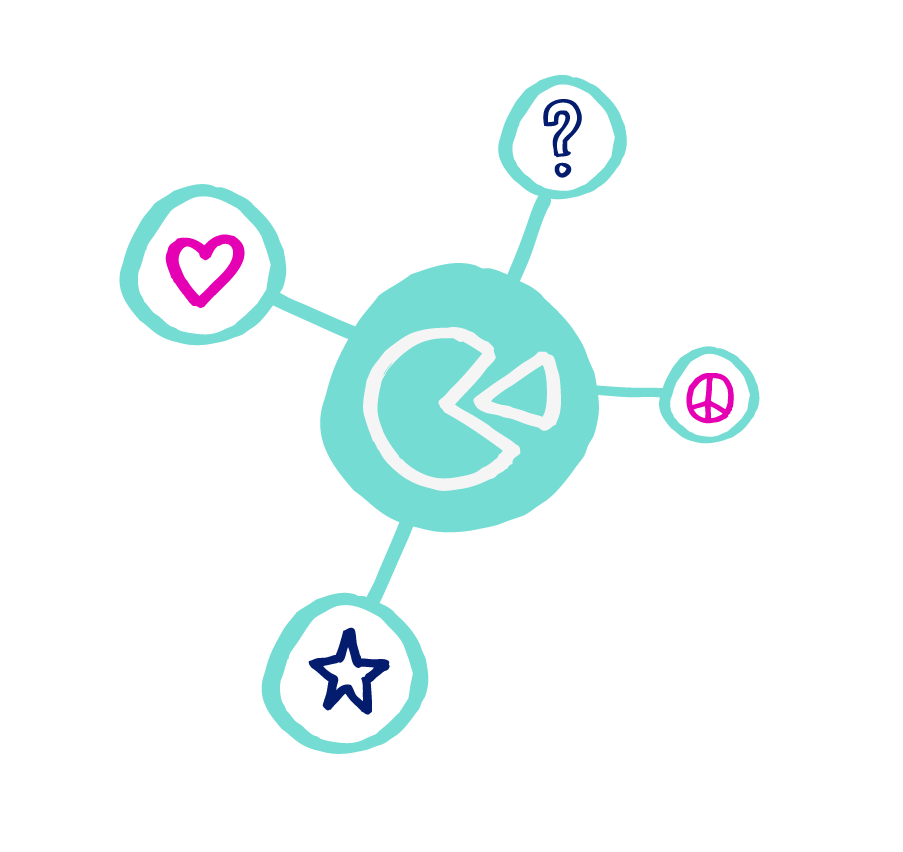Article
Beauty + Facts = Truth?

Beauty + facts = truth: the title of an Infographic Conference some time ago. It triggered me and got me thinking.
The title felt philosophical, and I scouted around to get some answers to the questions that it raised in my head. Is the truth always ugly? Does it need visualization to make it more beautiful, more relative, or to put it into perspective?
Explaining our world today
Looking at the complicated problems that we’re facing at the moment, you see a trend of explaining them through simple visualizations, like short animations and comparing data. Storytelling can also be used as a solution to explaining a big lump of information.
This was shown in the presentation about Refugee Republic. This award-winning website has already been online for a few years, but keeps getting more relevant. The makers visited Domiz Camp, a Syrian refugee camp in northern Iraq, and collected loads of interviews, pictures, videos, and illustrations by Jan Rothuizen. The result is a big online map, with four different routes you can take. You’ll keep discovering new things, and the whole experience feels really intuitive and documentary, not through facts but by telling a story through personal interpretation. The result is beautiful and effective, thanks to the nice combination of illustrations, film and photography.
Shayne Smart wondered why something that every human should know about is so hard to understand. He proposed turning the Geneva Convention into a large series of infographics, in a big project involving designers from all over the world, who voluntarily work together. This serves a higher goal than just nicely designed visuals, and has to be accessible and useable for people worldwide.

Big data? New insights!
Today, big data is everywhere and available for everybody. With a little knowledge of code, you can collect your own data from public dataflow and APIs. David McCandless encouraged the audience to search for this type of available data, and to try to gain new insights by making new connections and visualizations.
As an example, he collected break-up statuses from Facebook. It showed that most people break up before spring break (hot single summer) and only a few people during December (cold lonely Christmas). But he also brought his expertise closer to home, and tried to gain insights from his own personal questions, like trying to understand the universe. David made a strong suggestive visualization and used proportions, bright colors and shapes to give us an idea of the capacity of the universe, which is truly beautiful.
Ruiter Janssen had a different and more direct approach to infographics. Ruiter is an information designer and specializes in “data landscapes”, which he makes himself. He often plays a part in them too. This gives the information a personal feeling, making them more approachable, even if the subject is heavy, like suicide rates in the Netherlands.
Beauty vs. facts
A big contrast during the day came from the two different groups of speakers, one preaching that “every line should be a fact”, and the other who talked about the “showbiz” side of infographics. For some purposes (mostly scientific), it’s highly important that the infographic or illustration resembles the truth, or an average of the truth.
Max Gorbachevskiy’s presentation, however, showed that Russian propaganda infographics were, and still are, used to show a one-sided story, not focusing on the truth or objective information supply but showing themselves as the best and strongest party. So you could say that the people who made these infographics took the power to present information in the most convenient way, and didn’t care about the true facts.

Conclusion
In short, everybody has their own interpretation of the truth. It’s just a matter of how you present it. Of course, each data visualization has its own sources, purpose and target group. As a designer, I think all this should be clear before you start to design. My suggestion is not to pursue the truth, but to focus on making all the information out there approachable for as many people as possible. As designers, we should take responsibility, and make sure that infographics remain a reliable source of information.
Illustrations by Linda Tetteroo